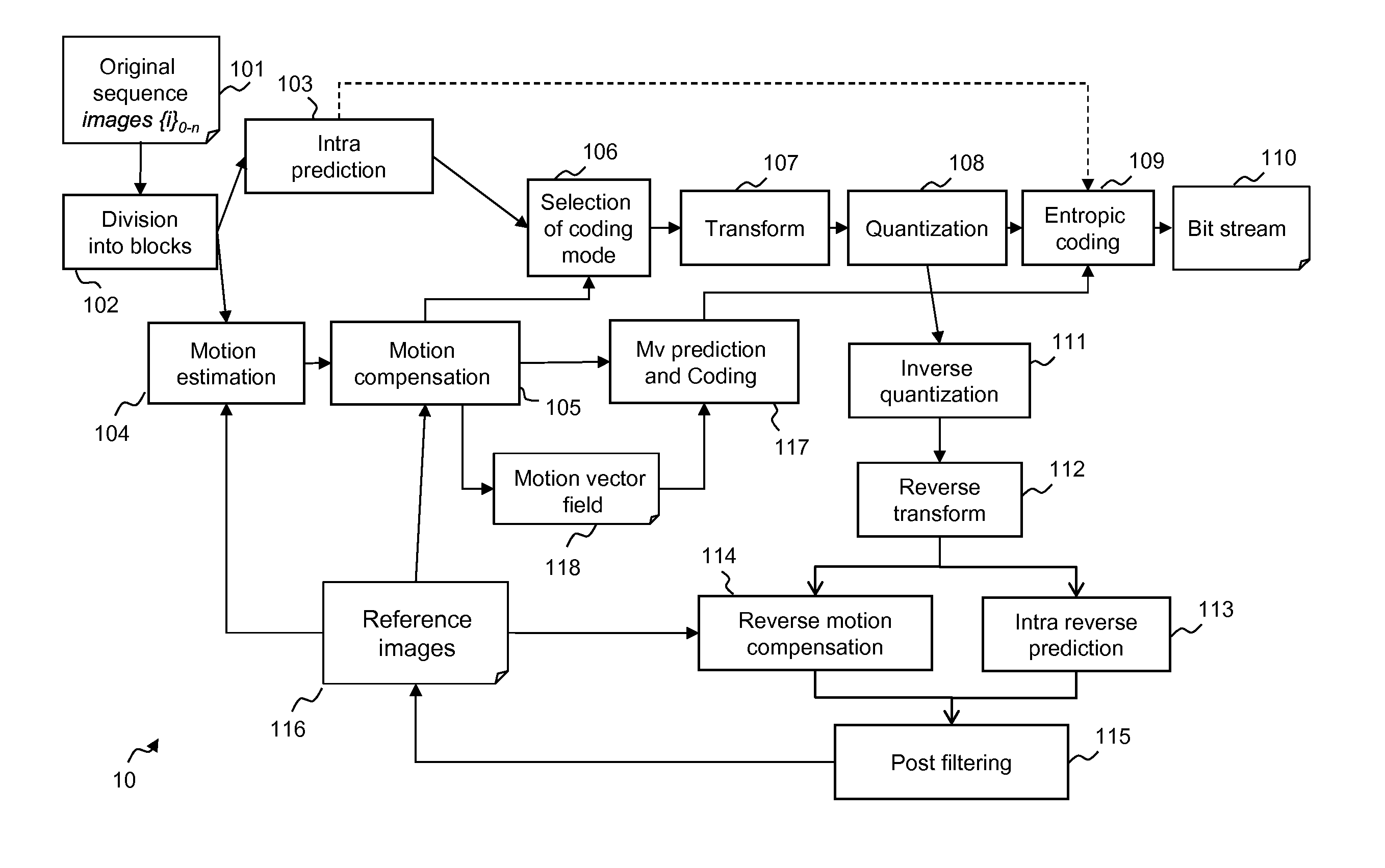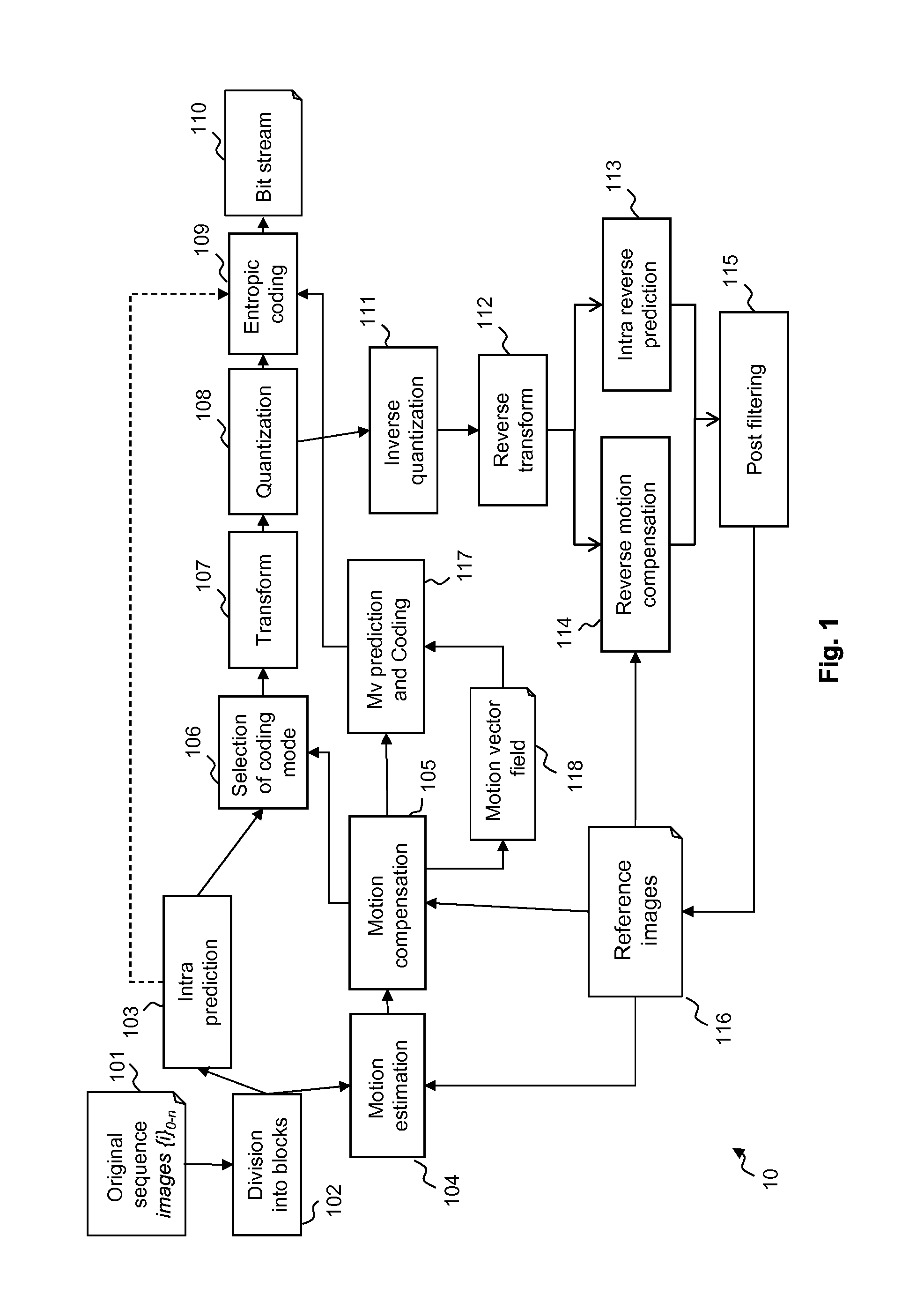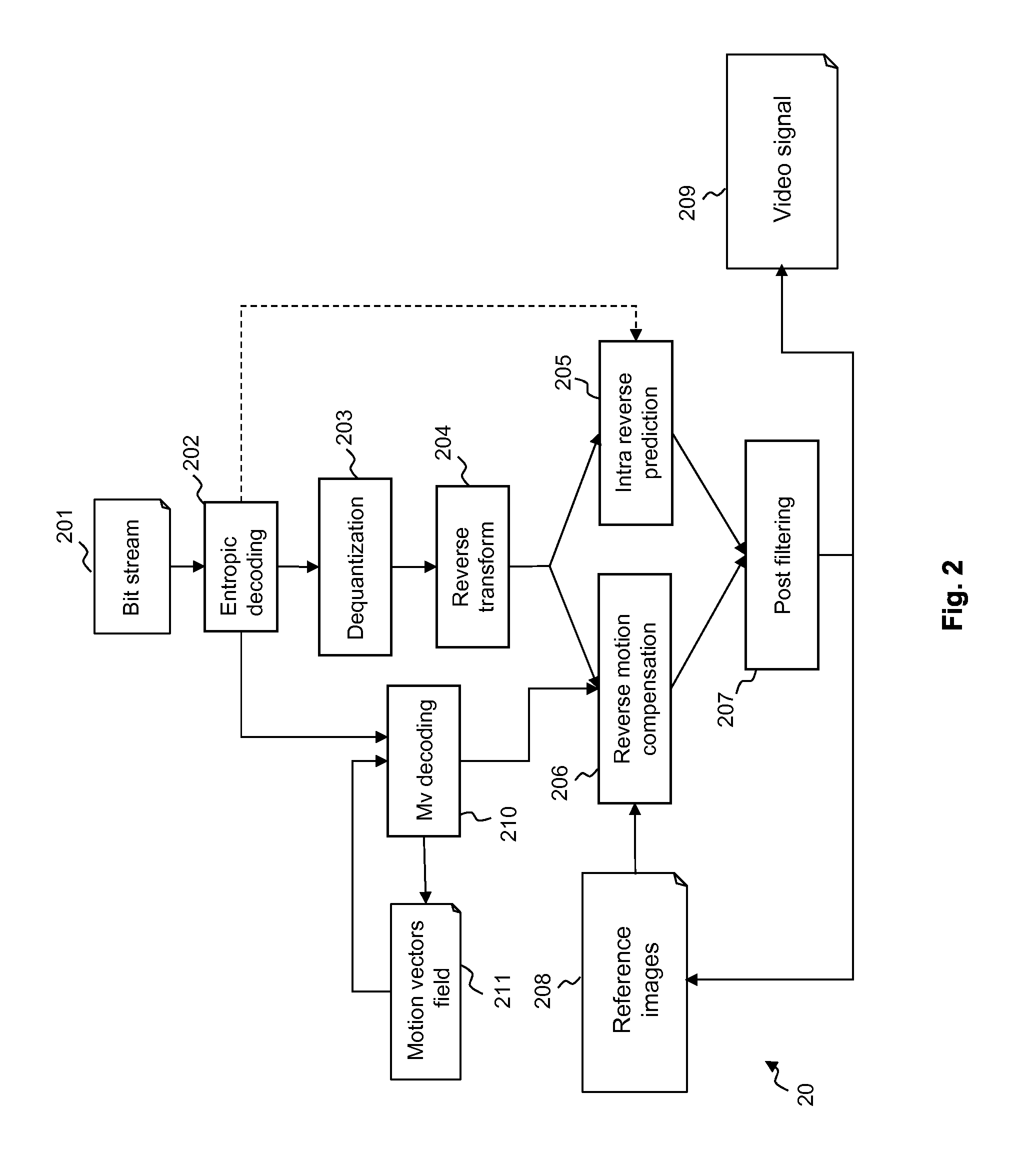Residual colour transform signalled at sequence level for specific coding modes
a colour transform and sequence level technology, applied in the field of video coding and decoding, can solve the problems of hevc and the performance of conventional video coding tools, including hevc, is sometimes underwhelming when processing such content, and the value of cu_residual_act_flag is quite costly at the encoder sid
- Summary
- Abstract
- Description
- Claims
- Application Information
AI Technical Summary
Benefits of technology
Problems solved by technology
Method used
Image
Examples
Embodiment Construction
[0118]FIG. 1 illustrates the HEVC encoder architecture. In the video encoder, an original sequence 101 is divided into blocks of pixels 102. A coding mode is then affected to each block. There are two families of coding modes typically used in HEVC: the modes based on spatial prediction (INTRA modes) 103 and the modes based on temporal prediction (INTER, Bidir, Skip modes) based on motion estimation 104 and motion compensation 105.
[0119]An INTRA Coding Unit is generally predicted from the encoded pixels at its causal boundary by a process called INTRA prediction.
[0120]Temporal prediction of INTER coding mode first consists in finding in a previous or future frame called the reference frame 116 the reference area which is the closest to the Coding Unit in a motion estimation step 104. This reference area constitutes the predictor block. Next this Coding Unit is predicted using the predictor block to compute the residue in a motion compensation step 105.
[0121]In both cases, spatial an...
PUM
 Login to View More
Login to View More Abstract
Description
Claims
Application Information
 Login to View More
Login to View More - R&D
- Intellectual Property
- Life Sciences
- Materials
- Tech Scout
- Unparalleled Data Quality
- Higher Quality Content
- 60% Fewer Hallucinations
Browse by: Latest US Patents, China's latest patents, Technical Efficacy Thesaurus, Application Domain, Technology Topic, Popular Technical Reports.
© 2025 PatSnap. All rights reserved.Legal|Privacy policy|Modern Slavery Act Transparency Statement|Sitemap|About US| Contact US: help@patsnap.com



